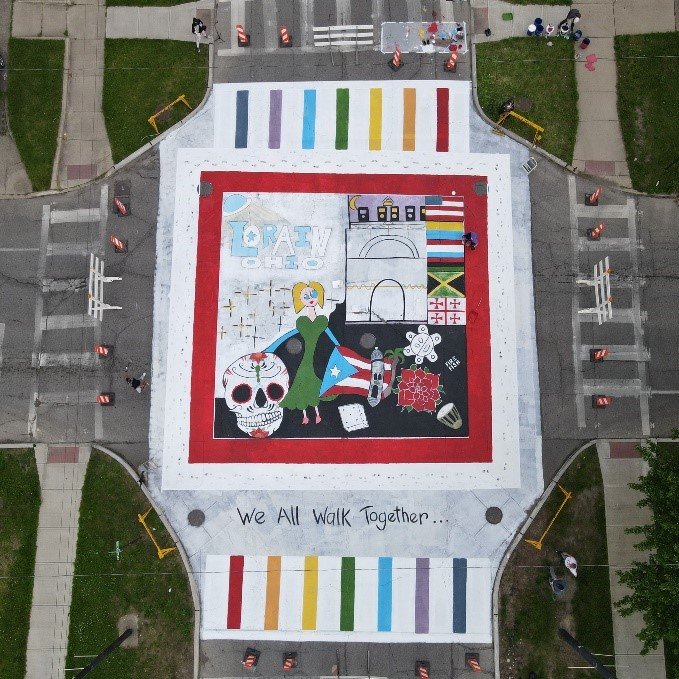Downtown Newark, Ohio
Key Facts
Location: Newark, OH
Partners: City of Newark, Newark Development Partners (Newark CIC), and private planning and community development partners
Summary: The Downtown Newark Revitalization Project is an excellent example of leveraging an otherwise traditional infrastructure project into a transformative placemaking opportunity and economic generator for the city by creatively designing the project to be eligible for multiple funding sources.
About
In 2014, the Downtown Newark Revitalization Project began as a $30 million sewer renovation project that would demolish ten street blocks around the town square—home to Licking County’s historic courthouse; many businesses; and the oldest, glass-enclosed mall in Ohio. Considering the project’s focus area and the city’s desire to pursue integrated projects when feasible, leadership determined this was an opportune time to also address issues with the downtown’s transportation network—which had been a point of concern for over ten years.
As a result, a downtown planning and visioning process was launched to re-think the entire downtown environment. Bringing together multi-disciplined experts, the project team collaborated with the public to create a broadly supported and impactful plan for improving downtown. The final design, accompanied by water and sewer line replacements, included the conversion of four intersections to mini-urban roundabouts at the corners of the town square. The plan also included substantial stormwater management features and other transportation, urban aesthetic, and economic development enhancements.
One of the most noteworthy project details was Newark’s ability to creatively leverage public investment from more than six different funding sources, including local, state, and federal funds; green infrastructure funds; and grant funds. The sanitary sewer and stormwater underground infrastructure was funded by a loan from the Ohio EPA, Division of Financial Assistance and administered by the Ohio Water Development Authority. Drinking water infrastructure was financed using renewable notes during the project that were converted to Revenue Bonds. Minor streetscape accessories were funded with Community Development Block Grant (CDBG) funds, and a portion of underground infrastructure was paid for directly from enterprise funds and not borrowed (approximately $1.6 million). Beautification efforts were paid for with a green infrastructure loan; and, in some cases, existing materials were repurposed (e.g., reclaimed bricks were incorporated into the roundabouts).
In less than five years, the $30 million public investment translated into more than $60 million in private development. Key investments included the Canal Market District; more than 60 residential lofts; a downtown medical facility; and renovation of the historic Crystal Ballroom—now an event space. The Downtown Newark Revitalization Project is an excellent example of leveraging an otherwise traditional infrastructure project into a transformative placemaking opportunity and economic generator by creatively designing the project to be eligible for multiple funding sources.
Since the project’s completion in 2017, Newark’s downtown has grown in population, jobs, and economic activities. Downtown property owners have voted to approve a Special Improvement District; the City of Newark announced the launch of the Downtown Revitalization Fund Program, which provides funds for property owners to improve downtown buildings and infrastructure; and the city has budgeted CDBG funds to be used in continued rehabilitation and renovation projects. Newark Mayor Jeff Hall says,
“Newark’s downtown revitalization has been nothing short of a community movement. The process of thinking holistically about our infrastructure, downtown framework, and identity, has driven tremendous economic success. It has taken a team of forward-thinking planners and engineers, and city and community leadership to rethink our downtown, and return it to a thriving community and regional destination.” (Domini, 2019)
Sources & More information:
"Using utility project funding to improve more than just the pipes" Webinar
"Historic downtown Newark, Ohio’s complex, phased revitalization success" Article
REVITALIZATION Article Featuring Newark, OH Downtown Revitalization Project











In March of 2021, local leaders introduced a pilot program to convert a vehicle travel lane into a two-lane bike lane on Clifton Avenue, a wide arterial, near the University of Cincinnati.